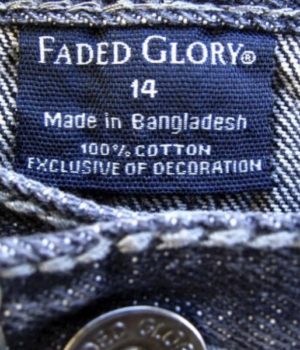Technology, trade, climate: Orientation in disruptive times by Olivier Zieschank and Mehdi Mahbub
Switzerland-based International Textile Manufacturers Federation (ITMF) is one of the oldest global organisations, which has been serving the world textile sector since 1904. This knowledge-based body is an international forum for the world’s textile industries, dedicated to keep its worldwide members constantly informed through surveys, studies and publications, participating in the evolution of the industry’s value chain and organising annual conferences as well as publishing considered opinions on future trends and international developments. The recent ITMF Annual Conference 2017 has [...]
Policy support in powering accessories sector ahead by Abdul Kader Khan
The local accessories makers meet more than 90 per cent of the country’s readymade garment (RMG) sector’s demand and also that of the pharmaceuticals, leather, frozen fish and agro-based industries, especially in the form of packaging products. The sector now imports only 5-10 per cent of the accessories as referred to by the buyers while the rest of the demand is sourced locally. Add to it the 20 per cent of the accessories now directly being exported to the global [...]
Encouraging investment thru’ economic zones for rapid economic growth by A Z M Azizur Rahman
Investment is the prime vehicle for a country’s overall development and progress, especially in the developing countries like Bangladesh. The contribution of Foreign Direct Investment (FDI) and local investment in the economic sector is immense. Investment is inextricably linked to foreign exchange earning, poverty alleviation, employment generation, technology transfer, skill development, export growth, development of backward and forward linkage industries, establishment of satellite town and service-oriented and supportive service industries and overall economic emancipation of the people. So, rapid [...]
Effective communication — a vital tool for building positive image of RMG sector by Riaz Khan
The readymade garment (RMG) industry is the leading sector in Bangladesh in terms of foreign exchange earnings. It accounts for 80 per cent of total export earnings. In Bangladesh, 4.4 million people are working in around 5,000 garments factories and approximately 80 per cent of them are female. Bangladesh is the second largest RMG exporter worldwide after China. China’s market share is around 31 per cent of the global garment market of $450b while Bangladesh holds 5.0 per cent, as [...]
Enterprise-based training: The need of the hour of RMG industry by Mehdi Mahbub
The readymade garment (RMG) sector is one of the economic lifelines of the country, but a bottleneck hampers the efficiency and productivity of the industry significantly. It is a hard fact that the industry has been suffering from a lack of skilled workforce. Enterprise-based training (EBT) is a must for development of the RMG and textile sector. It is a process of teaching or learning particular skills, knowledge or attitude on the premises of the enterprise and at the [...]
Ensuring transparency and accountability by Zillul Hye Razi
The launch of a pilot phase for a four-year project in April this year to map the readymade garment (RMG) factories in Bangladesh ushered in a new chapter of accountability and transparency in the country’s apparel export business. The Centre for Entrepreneurship Development (CED) of BRAC University will implement this Digital RMG Factory Mapping in Bangladesh (DRFM-B) project with the C&A Foundation as the lead donor and the Bangladesh Garment Manufacturers and Exporters Association (BGMEA) as its strategic partner. [...]
The evolution of Bangladesh readymade garment sector by Forrest Cookson
The readymade garment sector emerged through the establishment of several thousand factories. The following table gives the distribution of factories according to the employment size. There were 5,000 factories at the time of these listings and it will be about the same now. The median factory had 400 employees [BGMEA, BKMEA-member lists with declared employees]. Only 550 factories had more than 1,000 workers and only 176 more than 2,000. The industry started with small factories as it was easy to [...]







